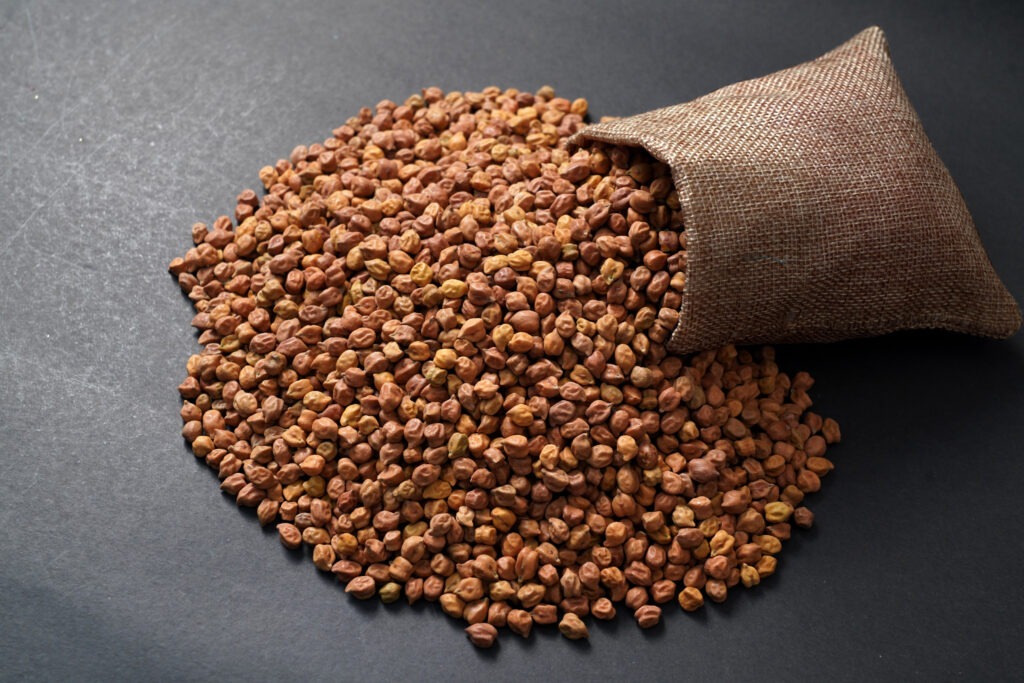Summary: Australia's pulse market is experiencing regional variations with chickpea production expected at 1.75 million tonnes. Forward sales have begun with new crop chickpeas priced at $460/tonne, while immediate delivery commands $525/tonne. Weather conditions over the next fortnight will be crucial for crop realization, as both chickpea and lentil producers navigate competitive pricing pressures from Tanzania and anticipate Canadian harvest outcomes.
The Australian chickpea market is displaying contrasting conditions across different regions as the continent prepares for its new crop season. While South Australia reports average chickpea conditions, New South Wales and Queensland are experiencing favorable crop development, setting the stage for what could be a significant harvest period.
Regional Crop Conditions Paint Varied Picture
Australia's diverse agricultural landscape is showing mixed results for pulse crops this season. The Australian chickpea market faces regional disparities, with production estimates pointing toward 1.75 million tonnes for the current year. However, the success of this forecast heavily depends on weather patterns over the coming weeks.
Agricultural experts emphasize that all regions across the continent require adequate rainfall within the next couple of weeks to ensure successful crop realization. This weather dependency highlights the inherent volatility in agricultural commodity prices and the importance of real-time market intelligence for traders and processors.
Forward Sales Strategy Reflects Market Confidence
Australian growers have adopted a proactive approach by initiating forward sales of both chickpea and lentil crop forecast volumes. The pricing strategy reveals interesting market dynamics, with immediate delivery chickpeas commanding $525 per tonne in containers, while new crop deliveries scheduled for November-December are being offered at the more competitive rate of $460 per tonne.
This pricing differential of $65 per tonne between immediate and forward delivery reflects several market factors including storage costs, risk premiums, and anticipated supply increases from the new harvest.
Harvest Timeline Shapes Pulse Trading Trends
The harvest schedule across Australia varies significantly by region, influencing pulse trading trends throughout the season. Central Queensland is expected to begin harvesting toward the end of September, marking the start of Australia's pulse season. However, delayed planting in Southern Queensland and New South Wales could push harvest activities into early November, creating supply chain implications for global markets.
Global Lentil Markets Await Canadian Influence
While Australia continues its lentil export activities through container shipments, market participants acknowledge that Canada will ultimately determine global market direction. Canadian growers face uncertainty regarding yield outcomes, creating a cautious atmosphere among exporters who are avoiding short positions and limiting forward sales commitments.
Import markets are positioning themselves for potential price softening during August-September when Canadian harvests reach full capacity. This anticipation is influencing current procurement strategies and inventory management decisions across major importing regions.
Competitive Pricing Dynamics Intensify
The competitive landscape in agricultural commodity prices has intensified with Australia reducing its desi chickpea offers by an additional $5 per tonne. India has received Australian desi chickpea offers at $695 CNF (Cost and Freight) for August-September delivery, while Tanzania has entered the competition with Pakistan-bound desi chickpeas priced at $665 CNF per tonne – representing a $15 increase from the previous week.
In the red lentil segment, Canada is offering Crimson varieties to India at $660 per tonne CNF for August-September, while Australia's Nipper type is competitively priced at $655 per tonne.
Market Outlook and Risk Factors
Despite current market stability, industry participants note that currency volatility could emerge as a significant factor driving pulse price increases. Food processing companies are closely monitoring exchange rate fluctuations as they plan their procurement strategies for the coming months.
The global harvest outlook continues to influence trading decisions, with market participants balancing immediate supply needs against anticipated seasonal availability from major producing regions.
Conclusion: The Australian pulse market exemplifies the complex interplay of regional production variations, weather dependencies, and global competitive dynamics that define modern agricultural commodity trading. As harvest seasons approach across major producing regions, traders and processors must navigate pricing volatility while managing supply chain risks. The success of Australia's 1.75 million tonne chickpea production target, combined with lentil crop developments, will significantly influence global pulse markets through the remainder of 2024. Market participants should closely monitor weather patterns in Australia and harvest developments in Canada to make informed trading decisions in this evolving landscape.
For real-time market intelligence and AI-powered trading insights across global pulse markets, visit Hectar's platform to optimize your procurement strategies.
